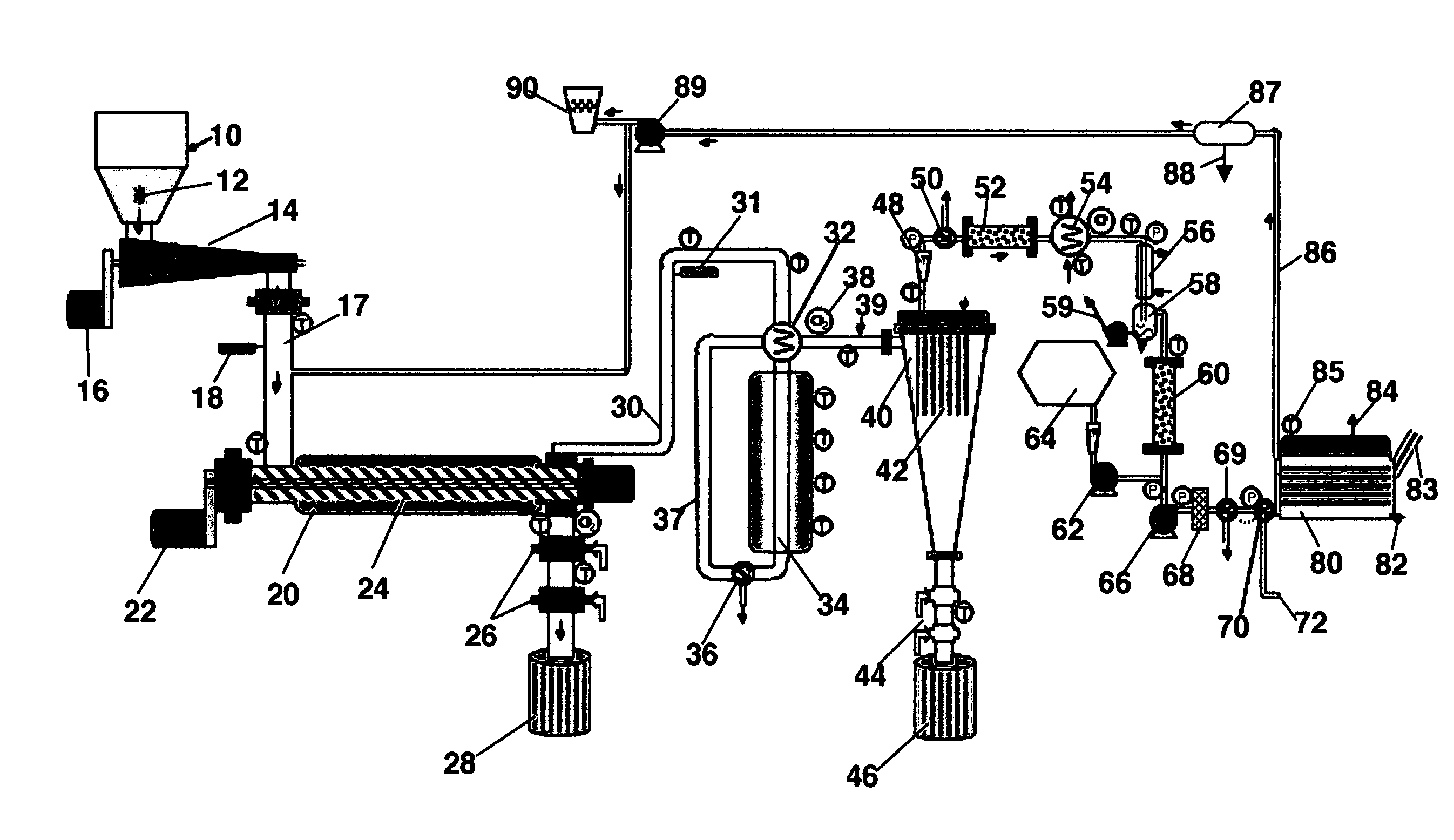Process and system for converting carbonaceous feedstocks into energy without greenhouse gas emissions
a technology of carbonaceous feedstocks and conversion systems, applied in the field of gas, can solve the problems of requiring an air separation plant, unable to eliminate the emissions of carbon dioxide and other greenhouse gases, and a problem source of carbon dioxide and other greenhouse gases, and achieves the effects of high hydrogen content, substantial carbon dioxide, and high efficiency
- Summary
- Abstract
- Description
- Claims
- Application Information
AI Technical Summary
Benefits of technology
Problems solved by technology
Method used
Image
Examples
example
[0038]The first step in the reduction to practice of the subject invention was to conduct experimental, small-scale pilot tests to reveal the identity and nature of the syngas produced. Accordingly, just completed was a gas test using the Bear Creek Pilot plant where solid waste was steam / CO2 reformed to make syngas. The syngas composition is shown in Table 1 below.
[0039]
TABLE 1Results from Pilot Plant Gas Test By Steam / CO2Reforming Of Solid WasteH2Hydrogen62.71vol %COCarbon Monoxide18.57CO2Carbon Dioxide10.67CH4Methane7.58C2H6Ethane0.48C3 TO C6Propane through hexaneC6H6BenzeneppmCOSCarbonyl Sulfide4ppmCS2Carbon Disulfide0.05ppmH2SHydrogen SulfideppmC10H8Naphthalene2.6ppbC10H7CH32-Methylnaphthalene~0.6ppbC12H8Acenaphthalene~0.4ppbC12H8ODibenzofuran0.36ppbPCDF + PCDDPolychlorinated-0.0041ppt TEQdibenzofurans + Dioxins
[0040]The pilot plant process configuration used to conduct these tests is described in a recent publication (T. R. Galloway, F. H. Schwartz and J. Waidl, “Hydrogen from...
PUM
| Property | Measurement | Unit |
|---|---|---|
| temperature | aaaaa | aaaaa |
| temperature | aaaaa | aaaaa |
| temperature | aaaaa | aaaaa |
Abstract
Description
Claims
Application Information
 Login to View More
Login to View More - R&D
- Intellectual Property
- Life Sciences
- Materials
- Tech Scout
- Unparalleled Data Quality
- Higher Quality Content
- 60% Fewer Hallucinations
Browse by: Latest US Patents, China's latest patents, Technical Efficacy Thesaurus, Application Domain, Technology Topic, Popular Technical Reports.
© 2025 PatSnap. All rights reserved.Legal|Privacy policy|Modern Slavery Act Transparency Statement|Sitemap|About US| Contact US: help@patsnap.com



